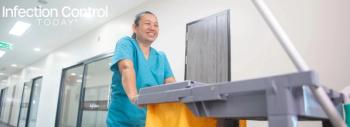
Back to Basics: Hospital Restores Catheter-Associated UTI Rates to Prepandemic Baseline

A 758-bed quaternary medical center slashed catheter-associated urinary tract infections (CAUTIs) by 45% over 2 years, proving that disciplined adherence to fundamental prevention steps, not expensive add-ons, can reverse the pandemic-era spike in device-related harm.
Before COVID-19 upended routine care, catheter-associated urinary tract infections (CAUTI) prevention at the adult hospital had been trending in the right direction. In 2019, the facility reported a standardized infection ratio (SIR) of .766, which is well below the national baseline. The pandemic reversed that progress almost overnight: device use climbed, staffing was stretched, and CAUTIs doubled, pushing the 2021 SIR to 1.384.
Recognizing that the elevated rate persisted even after the initial surge waned, hospital leaders chartered a multidisciplinary CAUTI Prevention Committee in early 2022. Rather than introduce new catheters or silver-impregnated supplies, the team opted for a “back-to-basics” strategy anchored in four pillars:
- Bundle fidelity. Daily audits reinforced every element of the maintenance bundle—from closed drainage integrity to hand hygiene before manipulation.
- Device alternatives. Nurses were empowered to replace indwelling catheters with external or intermittent options whenever clinically appropriate.
- Targeted culturing. An algorithm curbed reflex urine cultures and ensured testing aligned with updated clinical criteria.
- Transparent data. Real-time dashboards highlighted unit-level utilization and infection trends, enabling rapid feedback and friendly competition among departments.
Weekly huddles kept frontline staff, infection preventionists, intensivists, and quality analysts aligned; the committee refined tactics as new barriers surfaced.
Results came quickly. From 2022 to 2024, the hospital reduced CAUTI counts from 78 to 43, a 45% decrease, while lowering the overall SIR to .769, nearly matching the prepandemic benchmark. Critical-care units saw the most significant gains: Infections fell 59% (37 to 15), and the SIR plunged from 1.108 to .481. Device utilization mirrored these improvements, dropping hospital-wide from 17% to an all-time low of 14.9%; in critical care, utilization declined from 59.8% to 53.1%.
The project underscores a timeless lesson: When fundamental practices are consistently executed, backed by multidisciplinary ownership and actionable data, outcomes improve without requiring costly technology. The committee has packaged its toolkit so other hospitals can reboot their own CAUTI programs and reclaim the ground lost during the pandemic.
The information was presented as a poster at the Association of Professionals in Infection Control and Epidemiology Conference and Expo, held in Phoenix, Arizona, from June 16 to 18, 2025, by Jeffrey Chludzinski, MPH, CIC, FAPIC. Other authors were Scherolyn Legget, MSN, RN, CNS-C; Elissa Persaud, MSN, APRN, ACCNS-AG; Kevin Thompson, MPH, CIC; and Laraine Washer, MD. All authors are from the University of Michigan Health.
Newsletter
Stay prepared and protected with Infection Control Today's newsletter, delivering essential updates, best practices, and expert insights for infection preventionists.






